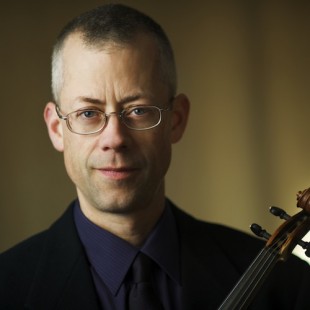Classical Music Review: The Sound of Blue Heron — Pleasure Aplenty
Several merits distinguish Blue Heron’s concerts, the most salient being the always-gorgeous singing of this pre-eminent Renaissance vocal choir.
By Susan Miron
By Saturday night, December 22, Incan predictions of doomsday were proven wrong, so Blue Heron were free to perform its program of Christmas in 15th-century France & Burgundy to a very appreciative crowd. Word has spread far and wide that Blue Heron, now in its 14th season, is simply superb: both of its Cambridge concerts were sold-out affairs.
Several merits distinguish Blue Heron’s concerts, the most salient being the always-gorgeous singing of this pre-eminent, Renaissance vocal choir. What’s more, music director Scott Metcalfe consistently writes program notes replete with interesting historical background about the music and the pre-concert guest lecturers are usually very good. This concert’s lecturer, Sean Gallagher, an expert on fifteenth-century polyphony, was unusually engaging.
There are several approaches to listening to a early music group like this, which includes trying to take in the enormous amount of information (contained in the notes and lecture) about the music and the history of the period. But I had a monstrous head cold, so I mostly just listened with pleasure to this exquisite concert: that was reward aplenty.
Christmas falls just a few days after the winter solstice, so the period of Advent comes during one of the year’s darkest weeks. Thus Blue Heron began its concert about Advent in a dramatically darkened (candlelight only) First Church, Cambridge, MA. The music included a motet for five voices by Obrecht, lovely works by Josquin Desprez and Guillaume Du Fay, and two plainchants. (Obrecht’s “Factor orbis” has five texts going simultaneously, explained Mr. Gallagher, “like a Christmas pie . . . a sermon in music.”)
Three of the concert’s composers were born within a few years of each other in Northern France (now Belgium)— Josquin in the mid 1450s near Picardy, Obrecht in 1457/8 in Flanders, and Brumel around 1460 near (it is speculated) Chartres. Franco-Flemish singers and composers, Mr. Gallagher pointed out, were as prized in Italy as Franco-Flemish tapestries.
The lights finally came on for Antoine Brumel’s “Nato canunt omnia,” the first of five Christmas pieces spaced throughout the program. In a concert permeated with exceptional beauty, the highlights were Pamela Dellal singing Baude Cordier’s (d. 1397/8?) New Year’s piece “Ce jour de l’an” with Laura Jeppesen on vielle and Scott Metcalfe on a small, twangy harp. The instrumentalists also played together in Ockeghem’s “D’ung aultre amer” and with mezzo-soprano Daniela Tošić in “La plus belle et doulce figure” by Nicola Grenon (c1380–1456).
A motet for Christmas day, “Hodie puer nacsitur/ Homo mortali” by Anonymous (from a Cypriot manuscript) ended the concert in a blaze of musical splendor, with everyone singing movingly. This piece, we learned from Mr. Gallagher, was one of 120 or so compositions contained in a single document. “It is a minor miracle that it survived,” he marveled. “This is the most beautiful one in the collection.” Certainly, when Blue Heron sang the piece, with its usual superb blend of musical intelligence, stylistic depth, and perfect intonation, no one would have questioned this judgment.
Tagged: Blue Heron, Christmas in 15th-century France & Burgundy


